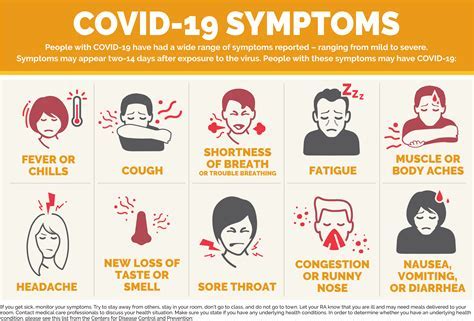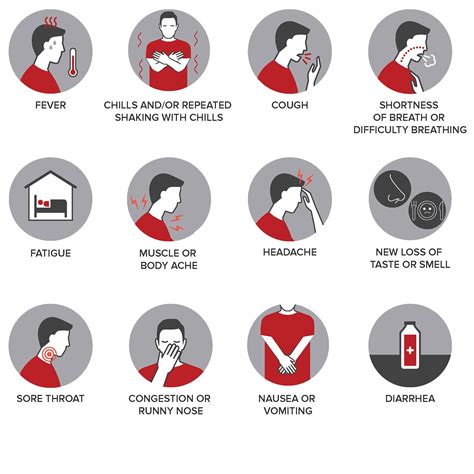Intro
Discover the latest Covid 2024 symptoms guide, covering coronavirus signs, pandemic updates, and virus prevention methods, to help you identify and manage Covid-19 symptoms effectively.
The world has been grappling with the COVID-19 pandemic for several years now, and as we move into 2024, it's essential to stay informed about the symptoms of this disease. The COVID-19 virus has undergone numerous mutations, leading to various strains and symptoms. Understanding these symptoms is crucial for early detection, treatment, and prevention of the spread of the disease. In this article, we will delve into the world of COVID-19 symptoms, exploring the common and uncommon signs, as well as the long-term effects of the disease.
As the pandemic continues to evolve, it's vital to stay up-to-date with the latest information on COVID-19 symptoms. The disease has affected millions of people worldwide, and its impact on global health has been significant. By recognizing the symptoms of COVID-19, individuals can take prompt action to seek medical attention, reducing the risk of complications and transmission to others. In this comprehensive guide, we will cover the various aspects of COVID-19 symptoms, including the common symptoms, uncommon symptoms, and long-term effects of the disease.
The COVID-19 pandemic has brought about significant changes in the way we live, work, and interact with each other. As we navigate this new reality, it's essential to prioritize our health and well-being. By understanding the symptoms of COVID-19, we can take proactive steps to protect ourselves and our loved ones. In the following sections, we will explore the different types of COVID-19 symptoms, their causes, and the measures we can take to prevent and manage the disease.
Understanding COVID-19 Symptoms

Common COVID-19 Symptoms
The common symptoms of COVID-19 include: * Fever * Cough * Shortness of breath * Fatigue * Headache * Sore throat * Runny nose * Body aches * Diarrhea * Nausea and vomiting These symptoms can appear 2-14 days after exposure to the virus and can range from mild to severe. In some cases, individuals may experience no symptoms at all, making it essential to practice preventive measures such as social distancing, wearing masks, and frequent handwashing.Uncommon COVID-19 Symptoms

Long-term Effects of COVID-19
The long-term effects of COVID-19 are still being studied, but research suggests that some individuals may experience persistent symptoms, such as: * Fatigue * Muscle pain * Joint pain * Sleep disturbances * Cognitive impairment * Mental health issues These symptoms can last for weeks or even months after the initial infection and can significantly impact an individual's quality of life.COVID-19 Symptoms in Different Age Groups

COVID-19 Symptoms in People with Underlying Health Conditions
Individuals with underlying health conditions, such as diabetes, heart disease, or lung disease, may experience more severe COVID-19 symptoms. These conditions can increase the risk of complications and require special consideration when managing the disease.Managing COVID-19 Symptoms

Preventing COVID-19
Preventing COVID-19 requires a combination of individual and community-based efforts, including: * Vaccination * Social distancing * Wearing masks * Frequent handwashing * Avoiding close contact with individuals who are sick * Staying home when sick * Avoiding touching the face, especially the eyes, nose, and mouthConclusion and Next Steps

We invite you to share your thoughts and experiences with COVID-19 symptoms in the comments section below. Have you or someone you know experienced COVID-19 symptoms? What steps have you taken to prevent and manage the disease? Your feedback and insights are valuable in helping us better understand the complexities of COVID-19 and develop effective strategies for mitigation and prevention.
What are the most common COVID-19 symptoms?
+The most common COVID-19 symptoms include fever, cough, and shortness of breath. These symptoms can range from mild to severe and can appear 2-14 days after exposure to the virus.
How can I prevent COVID-19?
+Preventing COVID-19 requires a combination of individual and community-based efforts, including vaccination, social distancing, wearing masks, frequent handwashing, and avoiding close contact with individuals who are sick.
What are the long-term effects of COVID-19?
+The long-term effects of COVID-19 are still being studied, but research suggests that some individuals may experience persistent symptoms, such as fatigue, muscle pain, joint pain, sleep disturbances, cognitive impairment, and mental health issues.
How can I manage COVID-19 symptoms?
+Managing COVID-19 symptoms requires a comprehensive approach that includes rest and hydration, over-the-counter medications, prescription medications, oxygen therapy, and hospitalization, in severe cases. It's essential to work closely with healthcare professionals to develop a personalized treatment plan.
What should I do if I experience COVID-19 symptoms?
+If you experience COVID-19 symptoms, it's essential to seek medical attention promptly. Contact your healthcare provider or visit a nearby hospital for guidance and treatment. Remember to practice preventive measures, such as social distancing and wearing masks, to reduce the risk of transmission to others.
